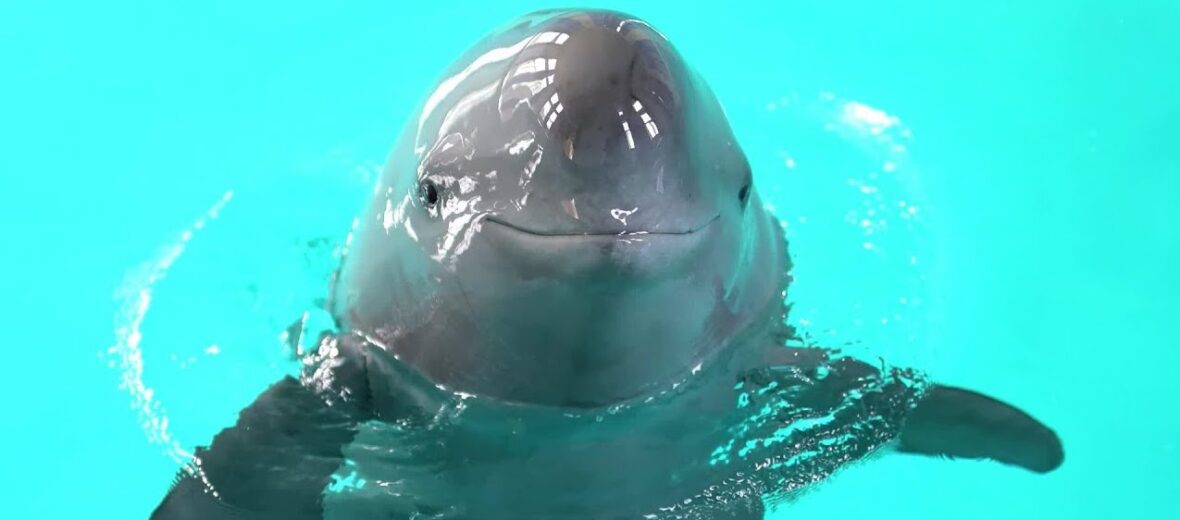
The Yangtze finless porpoise, aka Indo-Pacific finless porpoise, black porpoise, black finless porpoise, Jiangzhun (river piglet), Shushuk (porpoise), or limbur, is a cetacean found off the coasts of eastern and southern Asia from the Arabian Gulf, on east to Japan and down south to Indonesia. They prefer warm temperate and tropical coastal waters preferably with a soft sandy or muddy bottom, like those found around mangroves, estuaries, shallow bays, and even larger rivers. Sadly, there are only an estimated 1,800 left in the wild, and their populations are decreasing. These beautiful porpoises are threatened by pollution, habitat destruction, bycatch (getting caught in nets and long lines), overfishing, and climate change. As a result, they are listed as Critically Endangered by the IUCN.
First the Stats…
Scientific name: Neophocaena asiaeorientalis
Weight: Up to 158 lbs.
Length: Up to 7.5 feet
Lifespan: Up to 25 years
Now on to the Facts!
1.) These porpoises are so named for their absence of a dorsal fin. Rather, they have a small ridge on their back that starts just behind their blowhole and leads as far back as the tail flukes.
2.) Due to unfused neck vertebrae, they can turn their heads, like other river dolphins.
3.) Nearly half of these porpoises have pink eyes.
4.) Small pods are sometimes formed that consist of up to 4 individuals. Typically though they are solitary.
5.) They usually swim just beneath the water’s surface, with quick movements.
But wait, there’s more on the Yangtze finless porpoise!
6.) While seldomly breaching the water, they have been known to spyhop (sticking their head out of the water to have a look around).
7.) A group of porpoises is called a pod, herd, school, crowd, or shoal.
Did you know…?
These porpoises only swim at about 3 mph, but can have bursts that are much faster.
8.) The Yangtze river dolphin preys on fish, shrimp, prawns, squid, and octopus.
9.) Calves have been known to ride on their mother’s back. They grip onto the dorsal ridge and come out of the water as the mother comes up to breathe.
10.) Males are polygynous (1 male mates with several females).
But wait, there’s still more on the Yangtze finless porpoise!
11.) Females undergo up to an 11 month gestation (pregnancy) that produces a single calf.
12.) Porpoises, while similar looking to dolphins, typically can be told apart due to their smaller, rounder body shape and the lacking of the telltale beak that dolphins tend to have.
Did you know…?
Yangtze river porpoises have up to 120 teeth that are spade shaped.
13.) Porpoises have been around for approximately 15 million years.
14.) Due to the explosive exhale made by a breathing porpoise, when it surfaces, they have sometimes been called “Puffin pigs”.
15.) These porpoises produce a wide range of sounds, used for communication.
But wait, there’s still a little more on the Yangtze finless porpoise!
16.) Just like dolphins, porpoises utilize echo-location to assist in finding prey and each other.
17.) Their only known predators are sharks.
Now a Short Yangtze Finless Porpoise Video!
Be sure to share & comment below! Also, check out the Critter Science YouTube channel. Videos added frequently!
Want to suggest a critter for me to write about? Let me know here.



